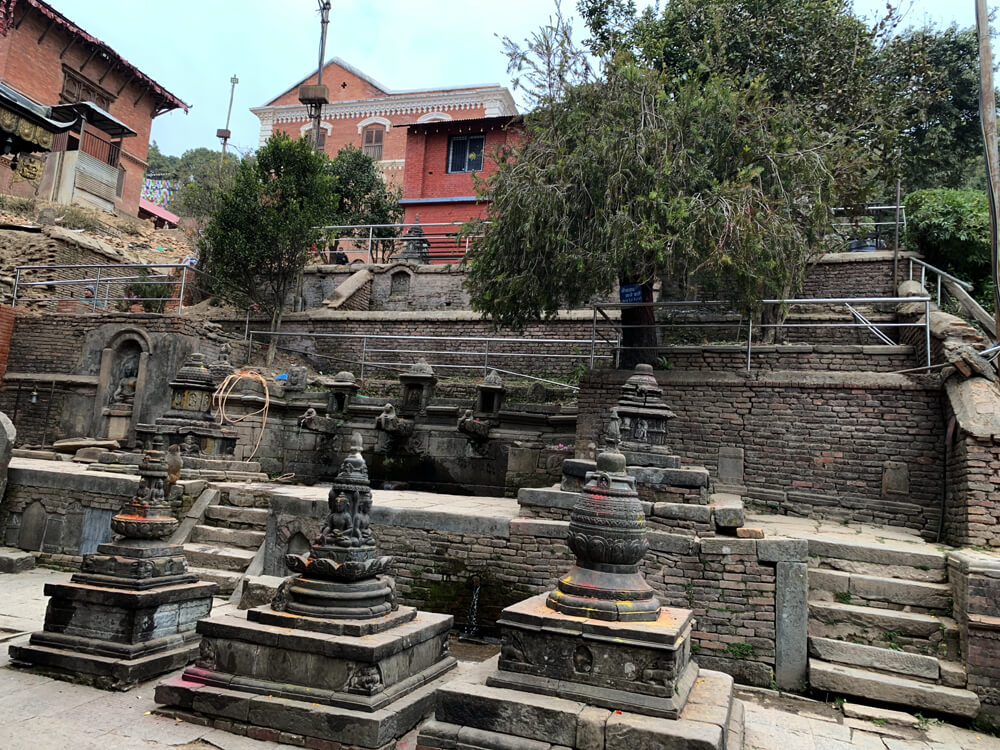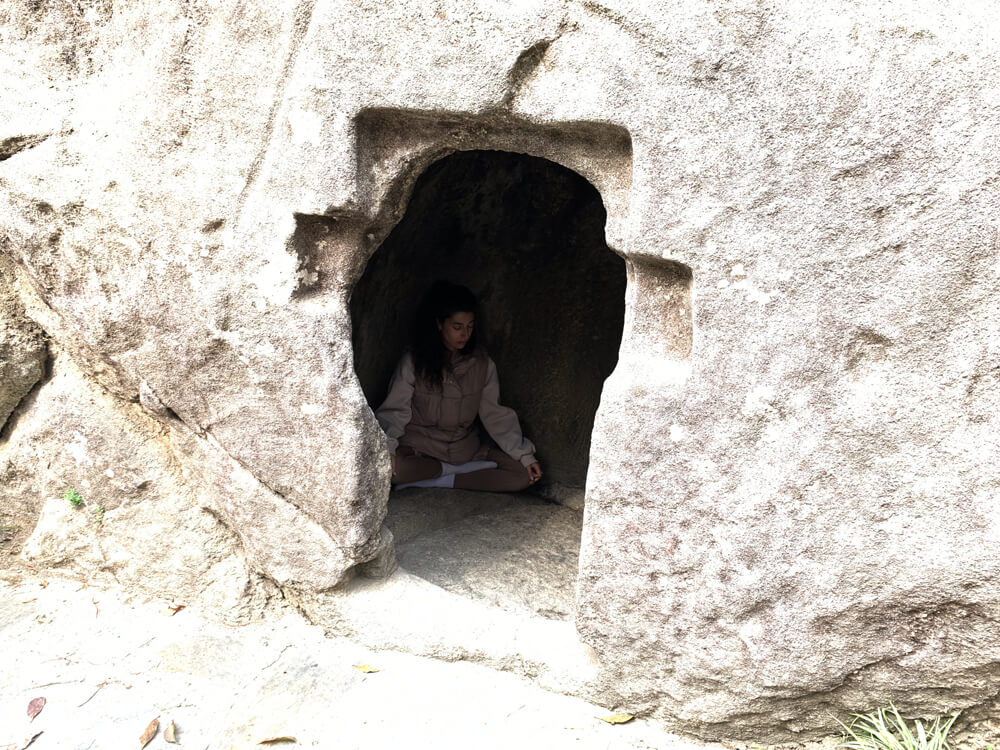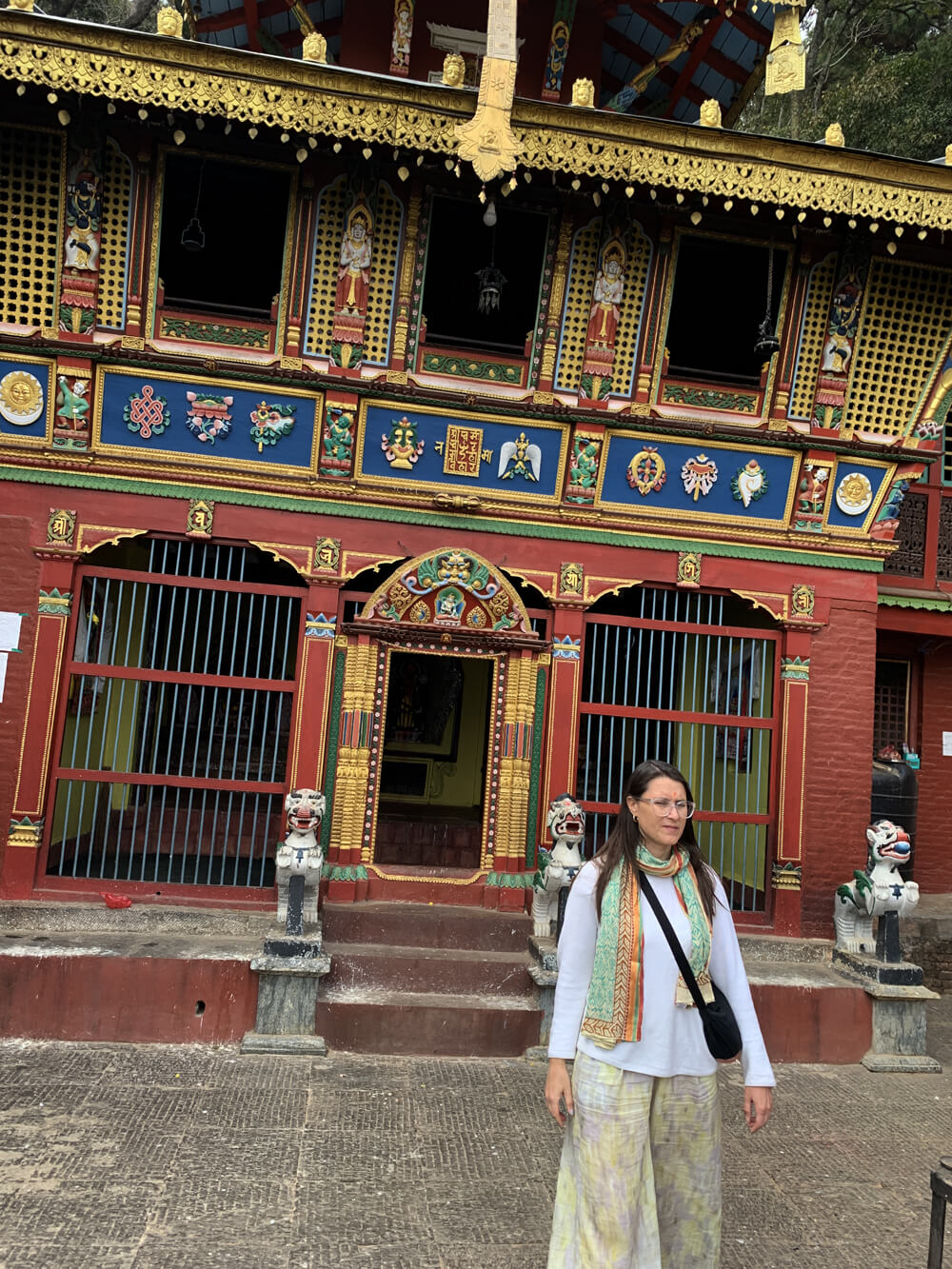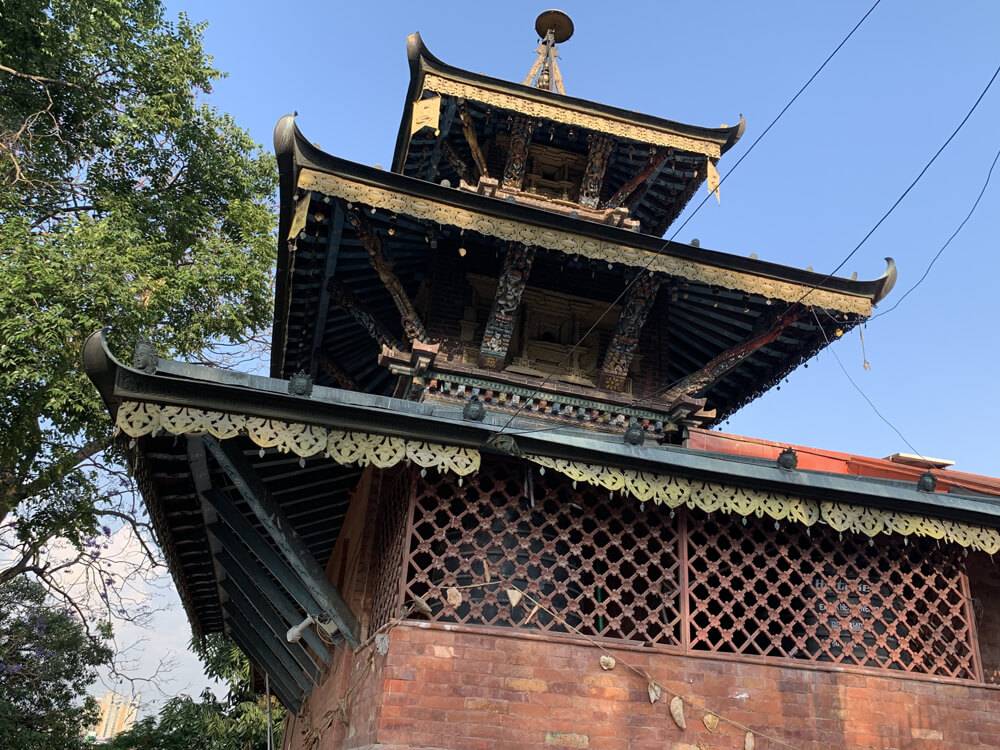Welcome to the Kathmandu valley Vajrayogini temples and sacred sites. Kathmandu valley is an abode of Dakinis and Yoginis. Pashupatinath temple premises, Pharping, Sankhu, Balaju, and Lalitpur are some of the prominent sites of the powerful deity- Vajrayogini.
Sankhu Vajrayogini Temple
Sankhu, an ancient Newari town has a significant Vajrayogini temple. Goddess Vajrayogini resides on a hill above Sankhu. The origination of the temple dates back to the 7th century. The temple has been reconstructed several times, and the latest one was built by Prakash Malla in 1655.
Nearby the Vajrayogini temple, there are several caves, where 84 Mahasiddhas meditated, including the Indian sages. There are a few temples along with two major temples on the premises. In the main temple, there is a depiction of Ugra Tara (aka Ekajati) brought from Bengal. The temple is also known as Khadka Yogini. The depiction of the goddess with lion and tiger-headed yoginis displays the power imposed by the deity.
Besides the main shrine, there is an unusual and unique attraction, which is the self-arisen Swayambhunath Stupa, locked inside the main temple. As it is a significant spiritual destination for Hindu and Buddhist devotees, it will be always guarded by Nepal police.
The traditional town of Sankhu was once a lake, which became a fertile town, and the story is connected with the myth of Vajrayogini.
See: Vajrayogini Temple Sankhu
Facts
Location: Sankhu (about 30 minutes drive from Thamel-central part of Kathmandu)
Transportation: car/jeep/hiace/bus according to the group size
Nearby Attraction: Milarepa Cave, Sali Nadi Shree Swasthani Temple

 Milarepa Meditation Cave-Sankhu, nearby Vajrayogini Temple
Milarepa Meditation Cave-Sankhu, nearby Vajrayogini Temple
Pharping Vajrayogini
Pharping Vajrayogini Temple is a 11th Century monument, located at the bottom of the 7th-century Guru Rinpoche Asura Cave. According to the myth of Marpa Lotsawa, he visited and meditated at Pharping Vajrayogini temple in the 11th century. It is believed that he visited this site at least three times in his lifetime. Vajrayogini Pharping is a notable site, which is a symbol of the transmission of the renowned dakini teachings.
As Pharping is mainly populated by the Newar people, Pharping Vajrayogini temple is a prominent pilgrimage site for the Newars of the Kathmandu valley. Every year, there will be a big fair held in the Pharping town with a chariot-pulling occasion.
While visiting Vajrayogini temple, you will get the advantage of visiting the famous Asura and Yanglesho Cave. They are 7th-century Guru Padmasambhava Caves, where he was enlightened and re-enlightened.
Facts
Location: Pharping-Phamting (about 30 minutes drive from Thamel-Central Kathmandu
Transportation: car/jeep.hiace/bus
Guide: Recommended
Nearby Sites: Asura Cave, Yanglesho Cave, and Dakshinkali Temple

Bidjeshwori-Dallu (near Swayambhunath Stupa)
The Bidjeswori Vajrayogini Temple is located near the UNESCO-listed world heritage site-Swayambhunath Stupa, at the bank of the Visnumati River. It is located within walking distance from Thamel- about a 20-minute walk from Thamel. The temple was visited by greatly renowned Siddhas and precious masters. The literal meaning of Vijeshwori Temple is related to the Newari name Vidhyeshwori-meaning 'Wisdom Goddess'. The temple is dedicated to the Flying Yogini, known as Akshayogini, who was a source of spiritual enlightenment for Indian Mahasiddha Maitripa.
Facts
Location: Near Swayambhunath Stupa (20 min walking distance from Thamel)
Transportation: car/jeep/hiace/bus or walking
Nearby attractions: Swayambhunath Stupa and Kathmandu Durbar Square
.jpg)

.jpg)
.jpg)
Pashupatinath Guhyeshwori
Pashupatinath Guhyeshwori is a widely renowned Shakti-Pith, an abode of Power Goddess. It has two interpretations: Hindu and Buddhist. According to the Hindu mythology, the vaginal part of Sati (wife of Lord Mahadev, who died in the Agni-flame in a ritual organized by her father). In the 17th century, King Pratap Malla constructed this sacred site at the bank of the Holy Bagmati River.
In Buddhist mythology, it is a sacred site, where the hidden mantra (Guhye mantra) was given. In Vajrayana Buddhism, there is a Guhye Pratha, where the followers follow a Guru and receive knowledge from him/her about Tantric wisdom.
Facts
Location: Pashupatinath Temple premises
Transportation: car/jeep/hiace/bus
Nearby sites: Tilopa Naropa Cave, Pashupatinath Temple, Boudhanath Stupa
Purano Guhyeshwori Temple
Purano Guhyeshwori Temple is located about 5 km away from Thamel (central tourist town). It is the old place, where Vajrayogini emerged when Kathmandu valley was a Lake. It is located at the bottom of Nagarjuna hill. Devotees circumambulate the shrine and offer butter lamps along with their offerings.
Facts
Location: 5 km drive away from Thamel
Transportation: car/jeep/hiace/bus
nearby sites: Nagarjuna Hill, Swayambhunath Stupa
Tour Inquiry and Booking
WhatsApp: +977 9851159455
Email: [email protected]

.JPG)
.JPG)
.JPG)

